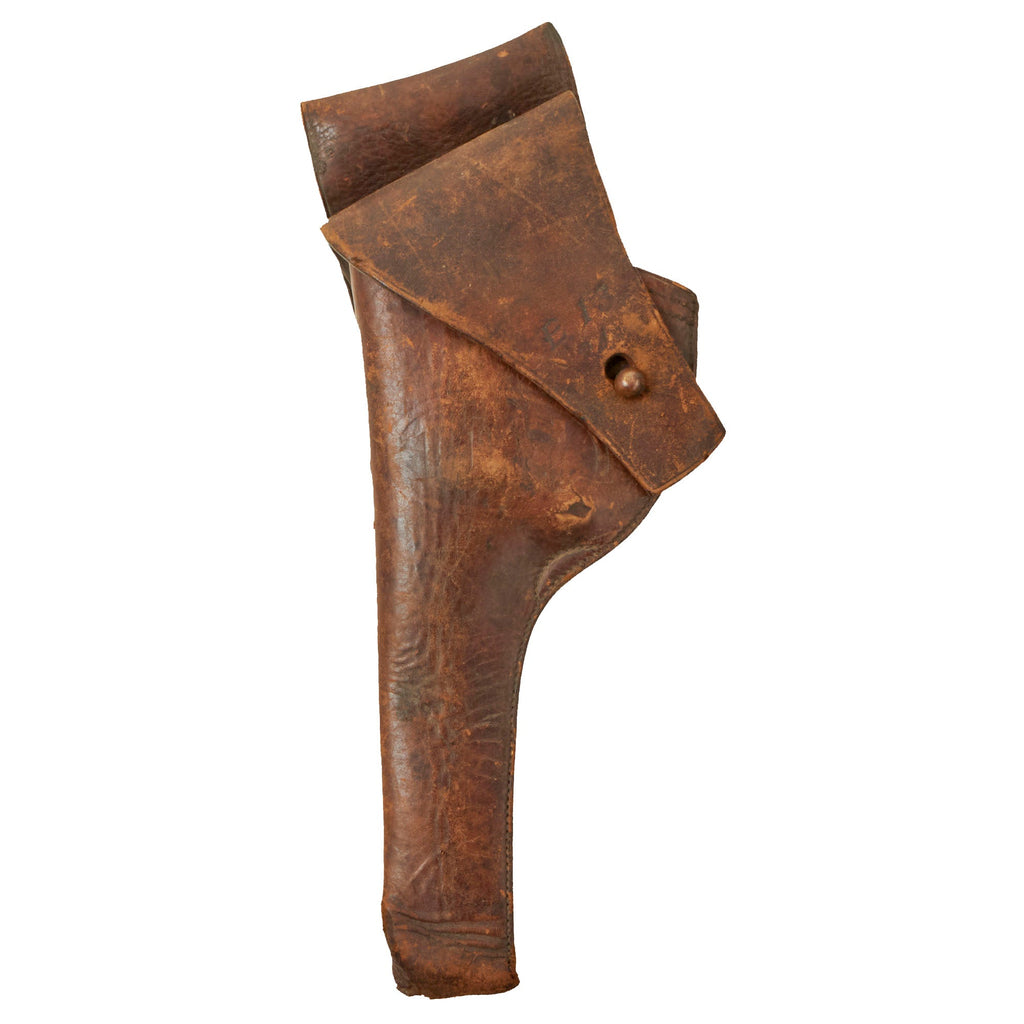Item Description
Original Item: Only One Available. This is an absolute beauty of a holster. This is a WWI AEF US Army/USMC Leather Belt Holster for the Colt or S&W M1892 or M1902 Revolver.
The holster is in very good condition, with the leather still soft, and light wear around the edges. The bottom ring for the leg tie down is missing, as is the leather tie string. The small leather tie inside the belt loop to secure it from moving when mounted is also missing. It has a clear US oval logo on the front. The leather is still soft, solid with great intact stitching. There is only minor staining, other than that, this is still a very serviceable, attractive holster.
On the rear of the holster there are additional markings, which were not stamped well, so they are hard to read:
ROCK ISLAND
ARSENAL
1910
H.E.K.
This holster is not a left hand design. It was originally designed to be carried on the right side of the waist with the gun in the "Butt Forward" position known as the Cavalry Draw. The right hand would be used for holding a sword. Please see: page #216 in Edward Scott Meadows book US Military Holsters and Pistol Cartridge Boxes.
A very good condition authentic example of an over 100 year old holster for your WWI collection. This would go great with an original WWI era .32 revolver.
Cavalry Draw
Cavalry draw is a method used to extract a pistol from a holster, which is designed to carry the pistol butt-forward.
The name and technique come from the leather gun holsters used by the cavalry of both the United States Army and the Confederate States Army, during the Civil War. The pistol was in a covered holster carried high on the cavalryman's right side, but was placed butt-forward for cross drawing by the left hand. The pistol was considered by the Army to be a secondary weapon, with the right hand used for the saber. Placement on the right permitted an alternate method to be used, allowing the right hand to draw the pistol if the sword were lost in battle.
In practice, however, the "alternate method" became the standard, with the sword being left in its sheath until the pistol and its spare loaded cylinders had been expended.
Later, it was found that the reversed holster can be more comfortable, especially when worn while sitting down, than the normal type holster. In addition, cavalry draw can be performed while sitting, as well as retaining the original off-hand cross draw capability. For these reasons, the FBI used the cavalry draw when they were equipped with short .38 Special revolvers.
Cavalry draw is performed in three steps:
- Rotate the wrist, placing the top of the hand toward the shooter's body.
Slip the hand between the body and the butt of the pistol, grasping the pistol's stocks in normal shooting grip.
- Draw the pistol, rotating the wrist to normal orientation as the arm is brought up to shooting position.
- With practice, the cavalry draw can be as fast or even faster than drawing from a normal, butt-rearward holster, because of the assistance of the body in placement of the hand on the pistol stocks.
Not all cavalry used this method of draw, or located their holsters on the right hand side of the body. In the 'Manual of Arms for the Sharps Rifle, Colt Revolver and Swords (1861)', which was used by the Union Army, the revolver would have been worn on the left side, in front of the saber-hook. To draw the revolver, the soldiers were instructed to 'pass the right hand between the bridle-arm and the body, unbutton the pistol-case, seize the pistol at the butt, draw it'.
"Wild Bill" Hickok was known to have used this draw style to great effect. In modern times, some SASS members use the form of carry.
- This product is available for international shipping.
- Eligible for all payments - Visa, Mastercard, Discover, AMEX, Paypal & Sezzle










